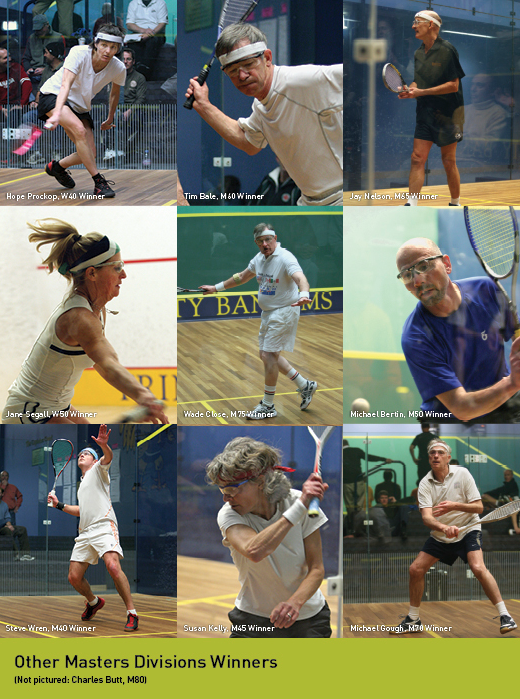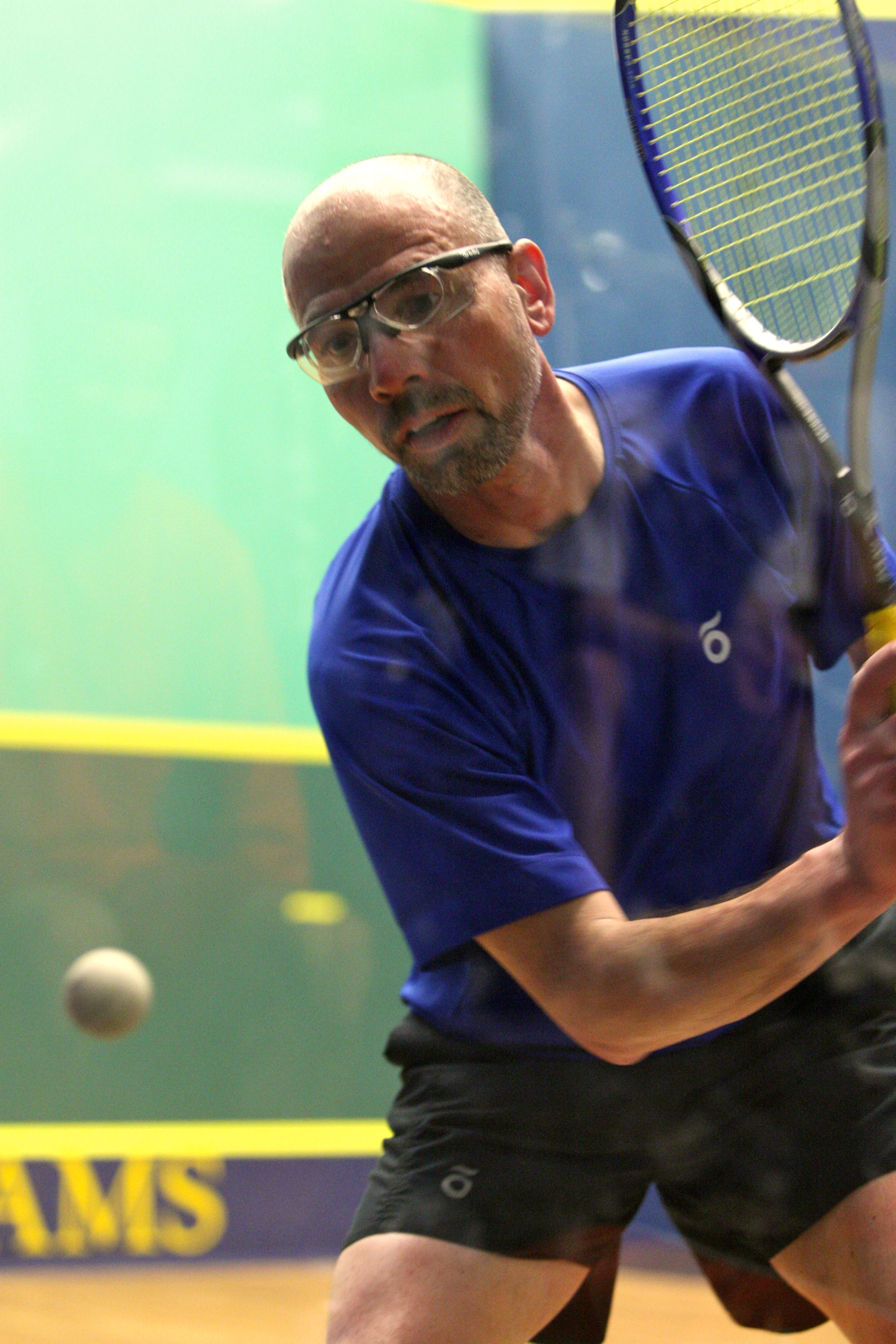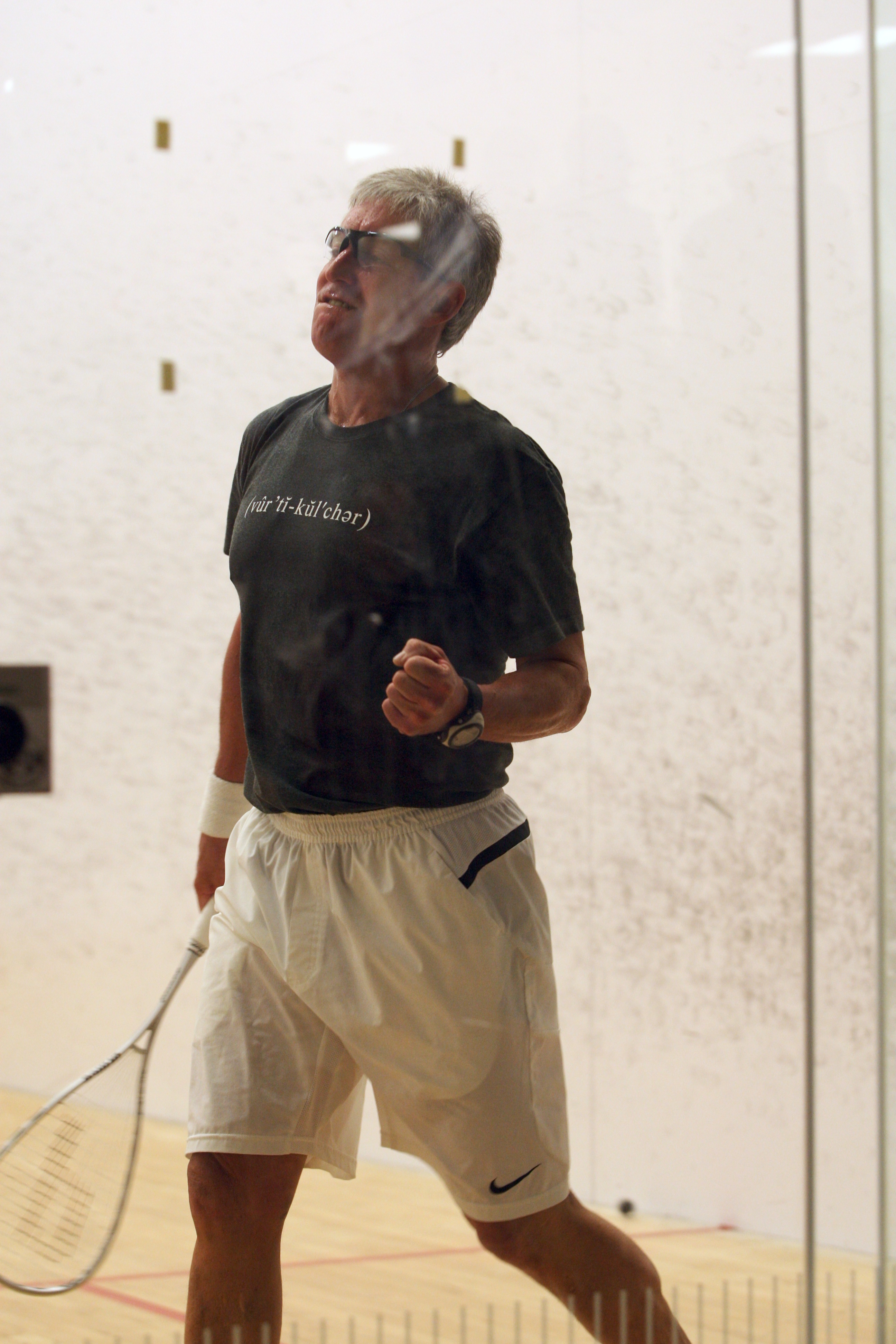
One year after Atlanta hosted what many consider to have been “the best U.S. Championships” in recent memory, the 2009 version returned to the Northeastern hotbed of squash—to the courts of the single most dominant college squash team this country has ever seen. Trinity College, with its 12 courts—including two show courts featuring three glass walls—and a United Nations-esque men’s team welcomed the 189 Masters hopefuls; a regular Who’s Who of US squash.
Despite some apprehension surrounding the luxuries—or lack thereof—that made last year’s Championships stand out (spectacular amenities at the full-service club, the cocktail party at the Atlanta Aquarium and Saturday black-tie dinner at the Piedmont Driving Club), Trinity put together a nice weekend that pushed the limited college locale up a notch. The Saturday dinner at the Society Room (posh would describe it well) could be envisioned as a dinner theater with a portable court inside one day.
On the courts, it was the Men’s 55+ that provided some of the most entertaining squash of the weekend. With three players who have had to beat each other to win their multiple national titles—Atlanta’s Tom Rumpler (last year’s Champion), Paul Assaiante (the Trinity coach) and Chris Burrows (Seattle, WA)—the sleeper had to be Burrows. The last time Trinity hosted the Championships, Assaiante defeated Burrows in a relatively easy final of the 50+. But Burrows hasn’t won a title in five years, having focused more of his efforts over the past three years conquering the highest peaks on six of the world’s seven continents (he conquered Everest in 2007, knocked off both Antarctica and Australia since last November and plans to summit Mt. Elbrus in Russia this summer). As a result, he was seeded to face Assaiante in the quarterfinals; a match that nearly missed being played since Burrows escaped his first round 11-13, 13-11, 10-12, 11-6, 12-10. Admittedly, Burrows wasn’t sharp, but the well-known competitive drive he possesses carried him through to meet Assaiante.
But far from facing Assaiante, The individual, Burrows was up against Assaiante, The Coach—with the full choir of Trinity players cheering his every move from the front row of seating. Assaiante succeeded in riding the home-court advantage in the early stages, winning game one 13-11. And that is when Burrows started to click. Burrows is well-known for his intensity on court with his menacing glare—generally directed at referees—but midway through the second game, Burrows caught Assaiante in a few stroke situations on the forehand side. After one such stroke, Burrows looked right at the Trinity players and exclaimed, “I saved your coach’s life on that one!”
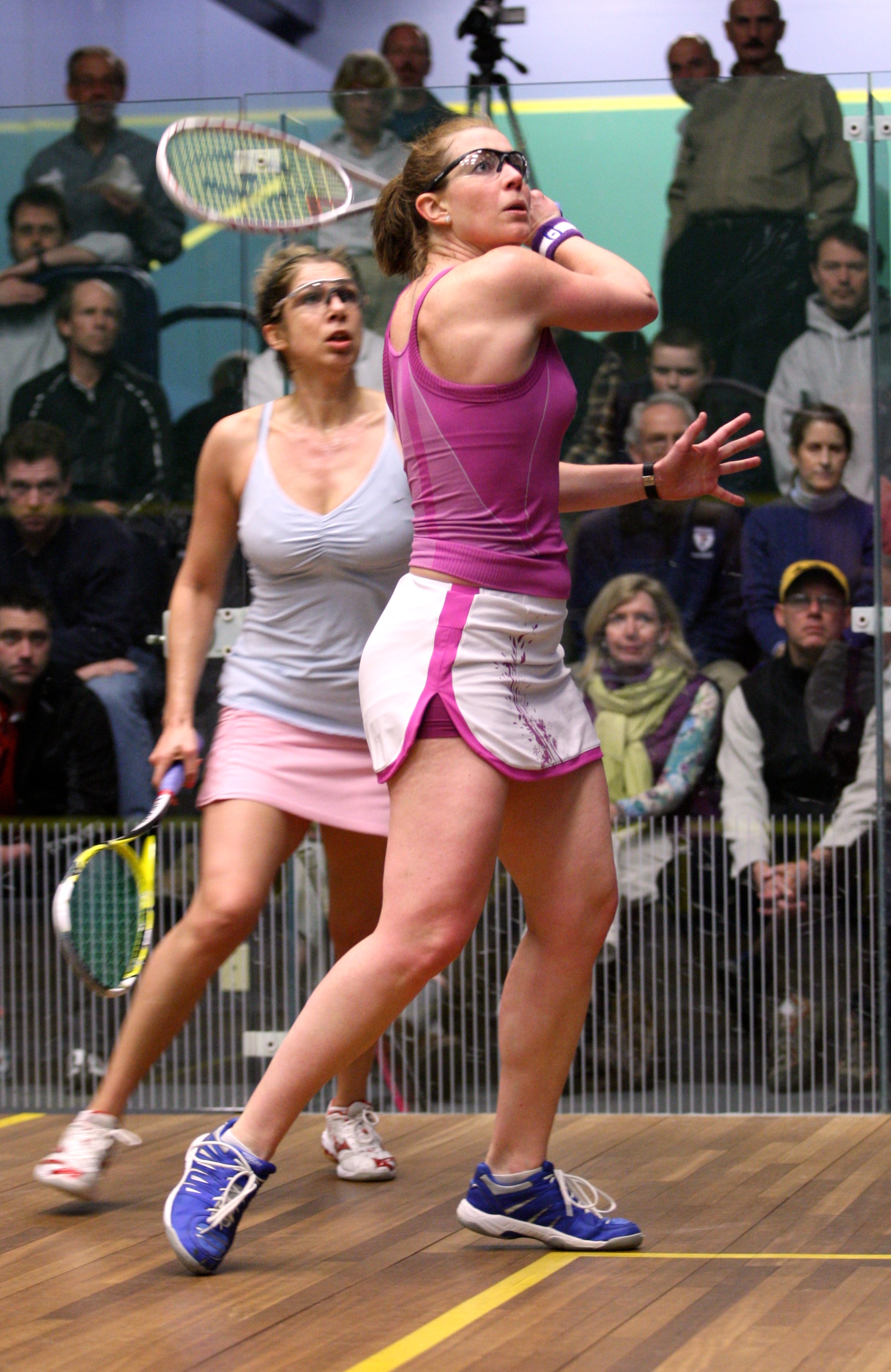
Which is what makes Burrows unique. Despite his burning desire to win, what many don’t see is his lighter side on the court. While the tension can be palpable when he’s seeking control, underneath he’s having the time of his life. He cracked a brief smile after his comment to the Trinity boys and then proceeded to roll through Assaiante in an easy third and fourth game to move through to the semis to face Rumpler.
After an easy first game, in which he had clearly found his stride, Burrows controlled the match and polished-off Rumpler in a quick three games—despite the scores being close in the last two.
Going into the final, Burrows was distracted. For Burrows, one of the attractions of playing in the US Championships at Trinity and other Northeastern locations is the opportunity to spend time with his sister who lives in Rye (NY). This year was no different. Burrows had spent a day with his sister’s family just before the two hour drive to Hartford (CT), and they were making the trek to see him take his shot at a seventh national championship to go along with his seven runner-up finishes. But as the knock-up began for his final with Rashid Aziz, Burrows couldn’t help worrying that his match was about to begin before his sister had arrived. “I’d feel really badly if they drive all this way only to find out they missed it,” Burrows said.
Less then five minutes after it began, Burrows walked off the court having scored just four points in the first game. Still no sis—until moments before the start of game two. With a quick peck on the cheek for sis, Burrows went back to work, but Aziz was focused and hammered Burrows for the loss of just five points in the second game.
For those that recall Burrows’s disheartening loss in the 40+ final to Dennis Marable in 1997 after securing an 8-1 lead in the fifth, Burrows has a flare for the dramatic, especially in critical matches.
Having been soundly scorched in the opening of this year’s final, Burrows took control of the third game 11-6, only to find himself down again 10-6 in the fourth game and facing a long and disappointing flight home to Seattle.
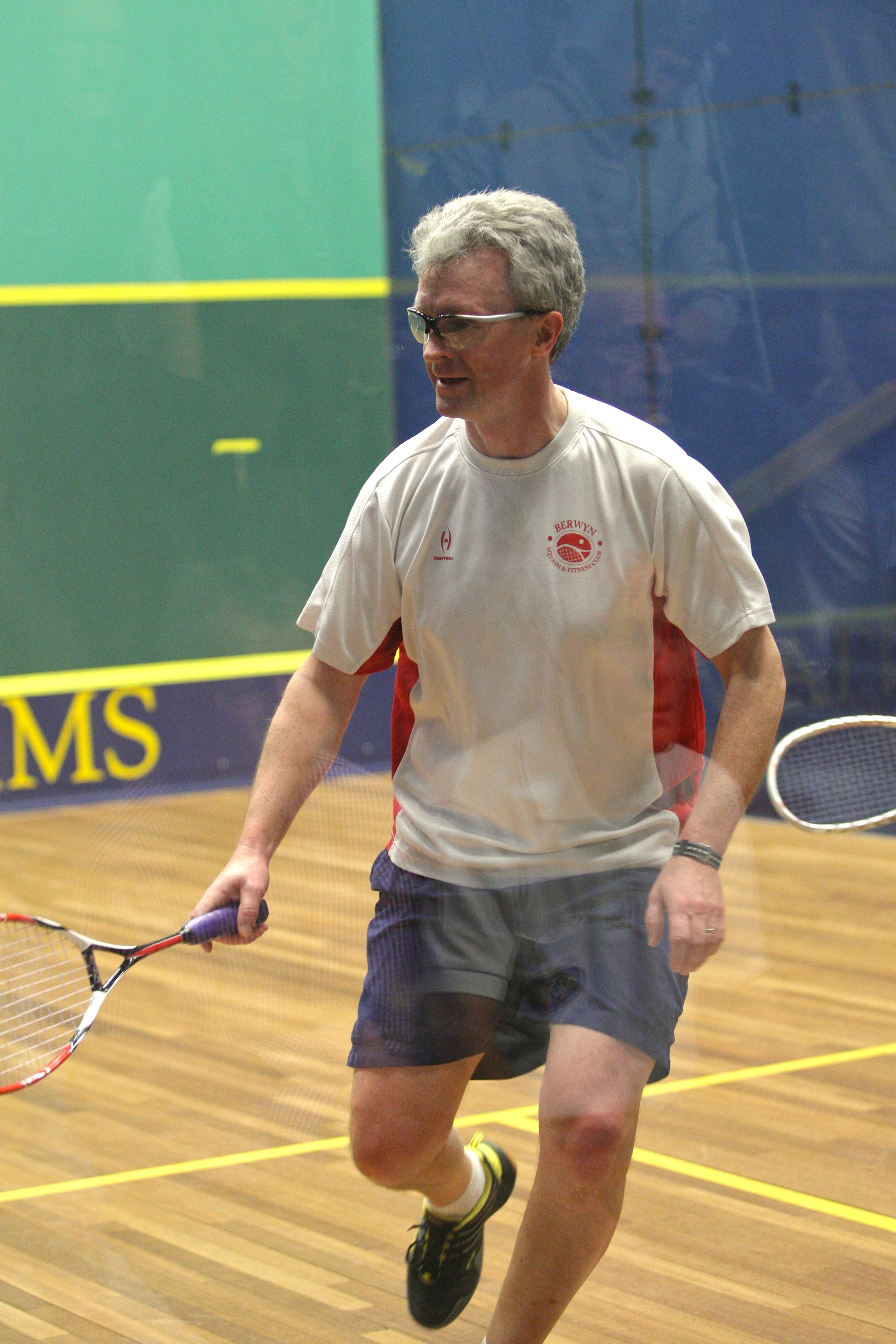
Though controversy has been brewing since the decision by U.S. Squash to adopt PAR-11 scoring last fall, the beauty of the system is the tension it creates. While most feel that a large lead is insurmountable, the critical nature of every point—regardless of who is serving—only adds drama.
On glass court number two Sunday afternoon at Trinity, one could almost feel the rising pulse rate of everyone watching as Burrows fought to stay alive.
Six gut-wrenching match balls later, Burrows finally took a lead for the first time in the fourth game at 13-12—and closed it out to take the final into a remarkable fifth and deciding game. Burrows, who jumped out to a 10-5 lead, attempted—unsuccessfully—to put the match away with winners twice, before finally succeeding with a ball that rolled out at the feet of Aziz. Eleven-to-eight in the fifth. Nothing like a little drama to cap the weekend.
Three’s a Charm for Grainger
Natalie Grainger and Latasha Khan. The two names synonymous with excellence in American women’s squash over the past decade. Khan, who ran off a never-before-seen seven-year run in the Women’s Open division, has only been prevented from reeling off three more by Grainger. Since gaining her citizenship in 2007, Grainger has dominated the game.
In the 2007 final in Portland (OR), Grainger dropped just three points in the final with Khan; last year, Grainger swept through the six-player draw without losing a game; and this year she captured the Women’s Open title again. However, her road to the title was paved with a few speed bumps along the way.
A week before this year’s U.S. Championships, Grainger shocked the professional squash tour by beating World No. 1, Nicol David, in the CIMB Kuala Lumpur Open in a five-game thriller. Hanging that loss on David put a halt to her 56-match unbeaten string dating back to November 2007.
Grainger could be forgiven if she expected to blow away the 11 players in the Hartford draw after her week in Malaysia. Though the US Women’s Open featured World Team Championships teammates Claire Rein-Weston, Hope Prockop and Olivia Blatchford (along with Amanda Sobhy who participated in the team trials), few expected Grainger to meet much in the way of resistance. But, in fact, Grainger struggled at times to find her way.
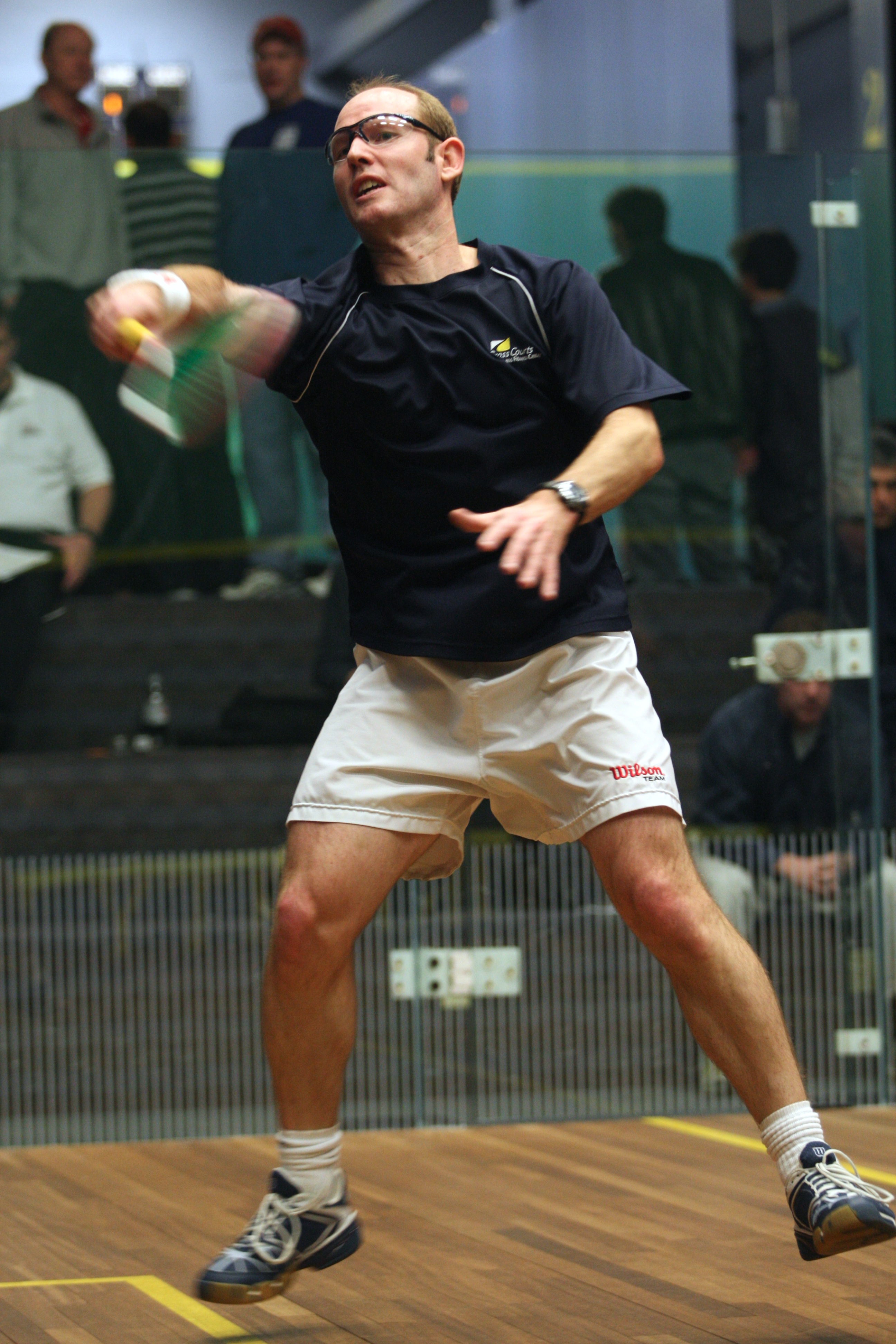
In the semifinals, 15-year-old Olivia Blatchford, making her second appearance in the Women’s Open, made a good showing by winning the third game before losing in four to the two-time defending champion. And in the final, Khan put up a fight before falling 11-6, 11-6, 8-11, 11-4.
Two weeks after securing her third US title, Grainger was rewarded with the World No. 2 ranking—a position she last held in February 2004.
Bouncing Back
Defending a title in the U.S. Championships is supposed to be hard; hard in that everyone you left in your wake the year before is aiming to shoot you down. But how should we view the record of a title-holder who falls short of repeating because of an injury?
That was the question facing Dominic Hughes as he was carried off the court in Atlanta after rupturing his achilles tendon. When asked shortly afterward what his outlook was on rehab and future events, Hughes replied simply, “I fully intend to regain my title next year.”
And he did. After months of therapy and work with his trainer at Berwyn Squash (a club owned by Hughes outside of Philadelphia), Hughes returned to the U.S. Championships in search of the Men’s 45+ title that he had won in Portland in 2007. Reaching the final in Hartford was relatively easy for him, as he ran through his first three rounds without dropping a game (though Will Carlin pushed him to 13-11 in the opener of their semifinal).
In the final, Richard Millman’s deadly lob/drop style succeeded in taking the third game, but Hughes ultimately fulfilled his intentions by winning in four.
“It wasn’t until about a month before the Championships that I felt fully confident in my foot,” said Hughes. “But I can confidently say now that I have absolutely no problems with it. I can really appreciate what so many other players go through with injuries, now that I’ve had a pretty serious one.”
